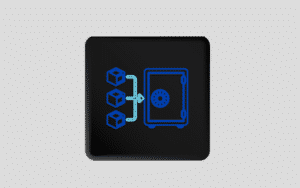Most users of Bitcoin or cryptocurrency understand that Proof of Work (PoW) is one of the core fundamentals that allows it to operate in a decentralized manner. But what really is PoW?
Definition
Proof of Work is a consensus mechanism that is built around members belonging to a network, working together to solve ‘arbitrary’ mathematical equations to prevent hackers from pervading the system.
What uses does “PoW” have?
Proof of work popularity started with the creation of Bitcoin in 2009. The decentralized nature of this currency requires a mechanism that will protect and validate mining actions and transactions between users. Thanks to this consensus mechanism, Bitcoin and cryptocurrency users have been able to safely exchange currency without requiring a third-party auditor.
The Proof of Work mechanism
To understand the inner workings of a PoW mechanism, one needs to understand that each blockchain will have its own hash. This is deduced by a computer actively solving hashing functions.
The blockchain is then ‘fixed’ with the total number of Bitcoin transacted and the number of transactions. Anyone who attempts to compromise this blockchain, even Satoshi, will be recognized as a fraud. This attempt will be shut down as the system rejects this incongruent input.
PoW main selling points
Time
Quite a simple concept, really. PoW has been around for 12 years and has stood as one of the most reliable decentralized consensus mechanisms out there. With more time, hackers will have more opportunities to find loopholes that they could exploit.
Furthermore, it could expose some features or services that might cause inconveniences to users.
In reality, hackers have figured out methods to hack PoW blockchains, and the service has not been perfect, but it has stood the test of time and proved to be reasonably reliable.
Prioritizing speed and efficiency
People dislike going to banks because they have to wait in line until it’s their turn for a transaction. It could take up to half a day to transfer 10% of a Bitcoin worth in assets. Cryptocurrencies’ inherent speed and efficiency are one of their main appeals.
The way the mechanism functions focuses on solving problems on one blockchain before moving to the next so that it does not create split history. This would favor speed and efficiency.
Possible weaknesses
Cost
This process is carried out by computers solving arbitrary puzzle equations. Computers require electricity to solve the puzzles that cost too much – both in a monetary and environmental sense. For this reason, Elon Musk has suspended Tesla’s acceptance of Bitcoin as a payment method earlier this year.
Exposed to 51% attack
If hackers own more than 50% of the mining positions, they will be able to take over the whole blockchain system. This is known as the 51% attack. There would be no problem with a large network of miners, but for smaller networks, this could be a tantalizing risk.
Final thoughts
As proof of work is the oldest consensus method, it is the basis of many “OG” coins, totaling more than $1.3 trillion in total market cap. The drawbacks of POW are pretty high for the benefits that it offers. Therefore many newer coins are moving towards an alternative method: Proof of Stake.



